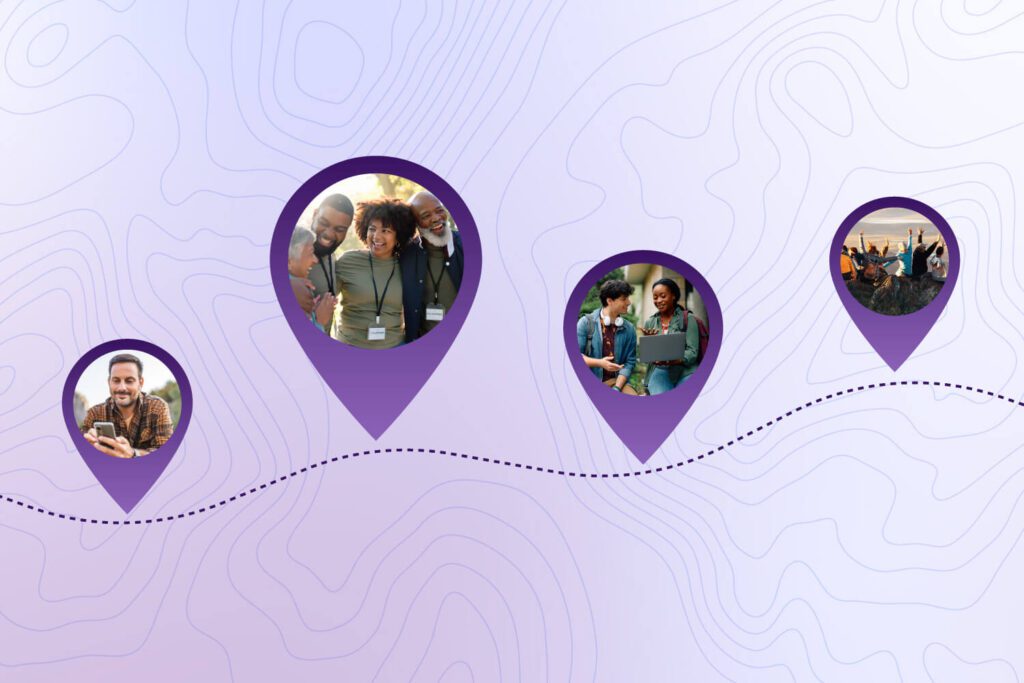The advent of virtual meeting technology has revolutionized the way people work, and Zoom is leading the charge. Your nonprofit organization likely has a Zoom component at work and might even operate fully remotely, using the software to meet with colleagues virtually.
There’s no doubting Zoom’s utility in the workplace, but the benefits don’t stop there for nonprofits. You can unite your supporters all across the country and inspire them to give by hosting virtual fundraising events. Whether your team is already using Zoom for virtual events or you are thinking of giving it a try, you can elevate your fundraising event by prioritizing security and data hygiene.
Focus on security and accessibility
As with any digital platform your nonprofit uses, you need to take precautions to preserve your nonprofit’s and your donors’ privacy. Fortunately, there are many ways to host a secure Zoom event. Here are the highlights of Zoom’s security features and why it’s important you use them:- Always require a password. Password-protected events cannot be randomly found by hackers. During the creation of your meeting or webinar, enable this setting and send the password out to your attendees. Keep in mind that by default, the password is embedded in the join link for confirmed registrants, so they don’t have to enter it manually.
- Lock your participants’ names. There is a setting to allow participants to rename themselves from the security menu when you start your meeting/webinar. If you turn this off when you start your meeting, then the name that your participants registered with will be displayed and they won’t be able to rename themselves. Locked names ensure that you, as the host, know who everyone is and allows you to collect donor-specific information for your fundraising appeals. Request that your attendees register with their first and last names so that you can tell who’s who.
- Use the waiting room feature. By using the waiting room, you can clearly spot any attendees that you weren’t expecting before they can join the event. Zoom will ask you to enable this setting while creating the meeting/webinar.
- Manually approve registrants. This way, you can fully vet every registrant before they have access to the event. Your attendees’ confirmation emails will only go out once you approve the registration—ensure that you make your approvals close to the event start to keep your meeting link secure. After you create the meeting or webinar, at the bottom of the page there is a group of settings called “Registration Options” in which you can change Approval to Manual rather than Automatic.
Input data from Zoom into your CRM
Employing good registration and security practices for your virtual event also helps you implement good data practices. To ensure that you collect actionable donor data from your virtual event, you should:- Require registration. Requiring Zoom registration will ensure that your attendees can be easily identified. This is true for manual data processing, and it will also be required for many nonprofit CRM software integrations to function properly. To enable Zoom Registration, you must select “Require Registration” on your meeting or webinar during creation. Then, you can capture registrations after the event by using Zoom’s built-in registration forms or by manually uploading registrant data to Zoom.
- Ask for a phone number. You can do this by including the attendee’s phone number as a required field on the Zoom event registration form. This guarantees that you can track the participation of supporters who dial into your event.
- Develop a consistent plan for getting data into your CRM. Being strategic and detailed with your event participant data allows you to act on that data quickly and easily. With a Zoom integration on your CRM, registration and attendance data will automatically sync from Zoom for both Webinars and Meetings. This syncing, paired with the other best practices above, will outperform what you can do manually, take less time, and decrease the amount of duplicate or unloadable data.
CRM considerations for Zoom fundraising events
Before you launch your first virtual event, make sure you’re using a CRM that integrates with Zoom to make the management process effortless for your team. When you make the switch, host an onboarding meeting where team members can learn how Zoom and your new CRM operate. Excite your team by reminding them that by creating secure, integrated virtual event experiences, you’re making good use of the amazing tools at your disposal.
Ready to Get Started?




